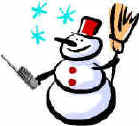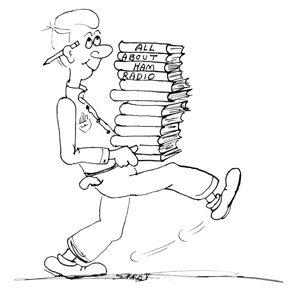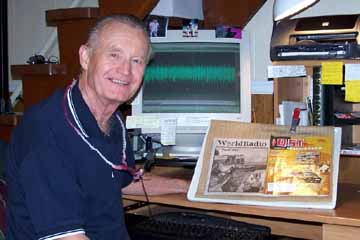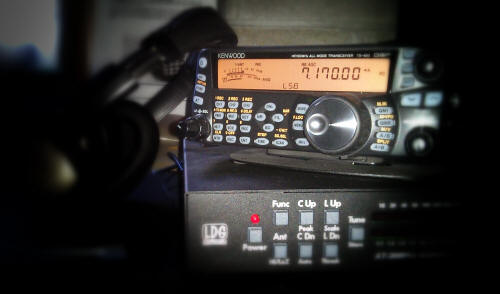Courage Center Handiham World Weekly E-Letter for the week of Wednesday, 19 December 2012
This is a free weekly news & information update from Courage Center Handiham System. Our contact information is at the end, or simply email handiham@couragecenter.org for changes in subscriptions or to comment. You can listen to this news online.MP3 audio stream:
http://www.handiham.org/audio/handiham.m3u
Download the 40 kbs MP3 audio to your portable player:
http://www.handiham.org/audio/handiham.mp3
Get this podcast in iTunes:

http://www.itunes.com/podcast?id=372422406
RSS feed for the audio podcast if you use other podcasting software:
http://feeds.feedburner.com/handiham
Welcome to Handiham World.
"Welcome the change coming soon into your life."

That was the fortune from a fortune cookie that I cracked open last week. It was timely, because there will be a lot of change in 2013. The Handiham System is a long-time program of Courage Center, and Courage Center will be making some changes in 2013. Here is what our Handiham members need to know:
The Boards of Directors of Courage Center and Allina Health approved an agreement to create a new partnership between Courage Center and Sister Kenny Rehabilitation Institute, part of Allina Health. This agreement includes full integration of services and programs across both Courage Center and Sister Kenny, including our respective foundations. This will be a uniquely comprehensive continuum of care including inpatient, outpatient and community-based rehabilitation services that keep people healthy and independent.
As an advocate on behalf of people with disabilities, we recognize that one of the challenges our clients face is a fragmented system of rehabilitation services. We believe the community will be better served by a comprehensive, streamlined continuum of services that blends both excellent health care and broader programs that support independence and community participation.
By blending Sister Kenny’s strengths in clinical care and process improvement with Courage Center’s breadth and depth of programming and history of advocacy, we seek to be recognized as a national leader in improving population health for this important part of our community.
The organization will now move forward with due diligence and integration planning that should culminate in an official merger sometime in the middle of 2013.
There are still many details to be worked out; we are committed to communicating updates about the integration along the way.
• Both Courage Center and Sister Kenny are committed to promoting health, independence and wellness for people with disabilities
• Client therapies and services will not be impacted for now. We will continue to take the same insurance plans. Any future changes will be communicated well in advance of any changes.
• We believe a more seamless system will make it easier for clients to get the coordinated care and services they need.
• We believe partnership is the best way for Courage Center to fulfill our mission and continue to grow and provide innovative care that meets the needs of our community, now and into the future.
• We expect to close on the partnership transaction in mid-2013.
• The new organization’s name and brand are yet to be determined.
• There are still many details to be worked out, and we are committed to communicating updates about the partnership as soon as we can.
There will also be flyers with this information available for clients at the Courage Center sites next week. The Courage Center website is also a source for updated information:
As an advocate on behalf of people with disabilities, we recognize that one of the challenges our clients face is a fragmented system of rehabilitation services. We believe the community will be better served by a comprehensive, streamlined continuum of services that blends both excellent health care and broader programs that support independence and community participation.
By blending Sister Kenny’s strengths in clinical care and process improvement with Courage Center’s breadth and depth of programming and history of advocacy, we seek to be recognized as a national leader in improving population health for this important part of our community.
The organization will now move forward with due diligence and integration planning that should culminate in an official merger sometime in the middle of 2013.
There are still many details to be worked out; we are committed to communicating updates about the integration along the way.
• Both Courage Center and Sister Kenny are committed to promoting health, independence and wellness for people with disabilities
• Client therapies and services will not be impacted for now. We will continue to take the same insurance plans. Any future changes will be communicated well in advance of any changes.
• We believe a more seamless system will make it easier for clients to get the coordinated care and services they need.
• We believe partnership is the best way for Courage Center to fulfill our mission and continue to grow and provide innovative care that meets the needs of our community, now and into the future.
• We expect to close on the partnership transaction in mid-2013.
• The new organization’s name and brand are yet to be determined.
• There are still many details to be worked out, and we are committed to communicating updates about the partnership as soon as we can.
There will also be flyers with this information available for clients at the Courage Center sites next week. The Courage Center website is also a source for updated information:
Here is the official news release:
http://www.couragecenter.org/ContentPages/partnershipagreementannouncement.aspx
http://www.couragecenter.org/ContentPages/partnershipagreementannouncement.aspx
Any media questions should be directed to Marketing & Communications, Ryan Hoffman, 763-520-0361, or ryan.hoffman@couragecenter.org.
Patrick Tice, WA0TDAHandiham Manager
New in Extra Class: Toroids

In this week's Extra Class audio lecture series (members only), we talk about toroids and different types of core materials. Here you can see several core designs that came with a Panasonic plasma TV set. These are designed to be used on the wiring between the set and its external cabling to antennas, speakers, other input devices, and so on. The chokes will prevent RF from traveling through these connecting wires and being radiated, which could cause interference to other devices - such as your amateur radio receiver!
Members should log in and go to Extra Class lecture 19 in the member section. This is the last audio lecture of 2012. We resume the series in 2013.
Holiday schedule
We will reopen on Wednesday, 2 January 2013. There will be no weekly Handiham World E-Letter and podcast on December 26. Updates and breaking news will be featured at www.handiham.org. Both Handiham Remote Base HF stations will remain on the air and available to users.
If you have a gift-in-kind of solid-state working ham radio equipment, it can be accepted during normal business hours at Courage Center, 3915 Golden Valley Road, Golden Valley, MN 55422. Although the Handiham office will be closed, the Courage Center front desk can give you a donation receipt. The general information number for the front desk is: 763-588-0811.
Please note that we cannot accept antennas (except small VHF/UHF antennas for handheld radios), electronic parts, outdated or broken equipment, oil-filled dummy loads, or anything not directly related to ham radio.
We really appreciate your support! All mail and gifts of support for the Handihams should be mailed to the following address:
Courage Center Handiham System
3915 Golden Valley Road
Golden Valley, MN 55422
Your gift is tax-deductible to the fullest extent allowed by law.
In other notable closings, ARRL Headquarters will be closed Monday, December 24 and Tuesday, December 25, 2012 in observance of Christmas, and Tuesday, January 1, 2013 in observance of New Year's Day. There will be no ARRL Audio News or ARRL Letter the last week of December. As always, the latest information about ARRL activities and services can be found at www.arrl.org.
We wish you a wonderful holiday week, a merry Christmas, and a happy and prosperous new year in 2013.
Correspondence:

Ken, KB3LLA, passed along a story about a new VoiceOver learning tool: VoiceOver Starter app now Released for iOS
VOStarter, the first app to offer training on the VoiceOver screen-reader for iOS has just been released to the app store. Developed by Michael Doise, VO Starter offers tips and hints navigating various iOS elements such as buttons, text fields, tabs, and more. It also allows one to practice interacting with these different controls. VO Starter is currently free for a limited time.
https://itunes.apple.com/us/app/vo-starter/id586844936
https://itunes.apple.com/us/app/vo-starter/id586844936
FCC PROPOSES ACTION TO ACCELERATE THE AVAILABILITY OF NATIONWIDE TEXT-TO-911 SERVICE
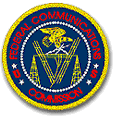
Proposal Would Mark the First Major Milestone in the Nation’s Transition to Next-Generation 911. Read more at:
http://www.handiham.org/drupal2/node/160
Handiham Nets are on on the air!
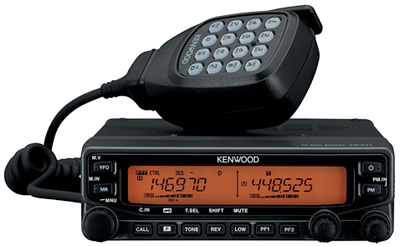
We are on the air daily at 11:00 USA Central Time, plus Wednesday & Thursday evenings at 19:00 USA Central Time. Nets will continue through the holidays, but if there is not a Net Control Station available, the net will be a simple roundtable.
The official and most current net news may be found at:
http://www.handiham.org/nets
http://www.handiham.org/nets
Join us on the Thursday evening Handiham Radio Club TechNet. The frequency in the local Minnesota repeater coverage zone: 145.45 FM, negative offset with no tone and 444.65 MHz with 114.8 Hz tone in the Twin Cities of Minneapolis and St. Paul Minnesota. The UHF repeater will be heard more easily in the Eastern Twin Cities. You will find our daily net on the air at 11:00 hours USA Central Time, with a Sunday roundtable session for a change of pace. A Wednesday evening session at 19:00 hours USA Central Time also offers a chance to take a guess at a trivia question (offered by some Net Control Stations) and visit with your friends on the air. Ideal for those who can't make the daily morning session! Then Thursday evening at 19:00 hours return to the Tech net and learn something new.
EchoLink nodes:*HANDIHAM* conference server Node 494492 (Our preferred high-capacity node.)
*VAN-IRLP*, node 256919
KA0PQW-R, node 267582
KA0PQW-L, node 538131
N0BVE-R, node 89680
Other ways to connect:
IRLP node 9008 (Vancouver BC reflector)
WIRES system number 1427
A dip in the pool

It's time to test our knowledge by taking a dip in the pool - the question pool, that is!
Let's go to the Technician Class pool:
T3C05 asks, "What is meant by the term “knife-edge” propagation?"
Possible answers are:
A. Signals are reflected back toward the originating station at acute angles
B. Signals are sliced into several discrete beams and arrive via different paths
C. Signals are partially refracted around solid objects exhibiting sharp edges
D. Signals are propagated close to the band edge exhibiting a sharp cutoff
The correct answer is C: Signals are partially refracted around solid objects exhibiting sharp edges. Also known as "knife-edge effect", more information can be found on Wikipedia at http://en.wikipedia.org/wiki/Knife-edge_effect. The explanation is highly technical, but what it means for ham radio operators is that sometimes signals can find their way around sharp-edged obstacles in surprising ways.
Please e-mail handiham@couragecenter.org to comment.
Remote Base health report: W0EQO is on line. W0ZSW is on line.
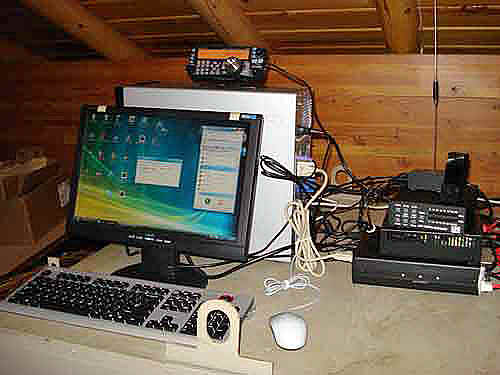 Work continues on the remote base software with a projected release in January 2013. Both stations are accessible via Echolink for receive. Look for W0ZSW-L and W0EQO-L using the search function in your Echolink application. Please note that it is not allowed to connect through RF to the two remote base Echolink nodes, you can only use the Echolink application of a computer or smartphone.
Work continues on the remote base software with a projected release in January 2013. Both stations are accessible via Echolink for receive. Look for W0ZSW-L and W0EQO-L using the search function in your Echolink application. Please note that it is not allowed to connect through RF to the two remote base Echolink nodes, you can only use the Echolink application of a computer or smartphone.If problems show up, please email handiham@couragecenter.org.
Keyboard commands list updated:
http://handiham.org/remotebase/w4mq-keyboard-commands/
Solar Activity Forecast:
Solar activity is expected to be at low levels with a slight chance for M-class flares on days one, two, and three (19 Dec, 20 Dec, 21 Dec).Credit: NOAA Space Weather Prediction Center:
www.swpc.noaa.gov/forecast.html
This week @ HQ
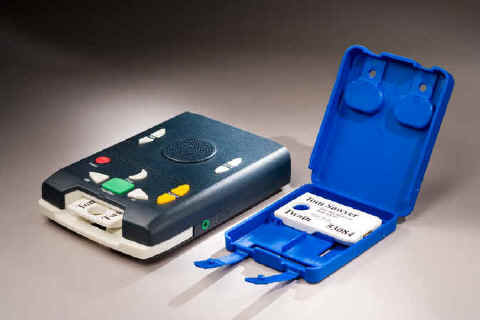
The January Audio Digest is in production. All December DAISY files are available in the DAISY section of the website following member login. Please let me know if you have trouble using the DAISY files, because this is an important member service and we want you to take advantage of it.
Another member service is the audio lectures for Technician, General, and Extra. All courses are available on line for your use whenever you want to study or review. Teaching is done with thoughtful attention to descriptions for those who are blind, and we promote understanding concepts rather than simply memorizing the question pool. If you would like to use this service but do not understand how, please contact us. We can also put the audio lectures on your DAISY digital NLS cartridge if you prefer that method instead of downloading or streaming audio from the website. Our latest audio lectures cover concepts like resonance from the Extra Class course. Please join us in whatever course you need, and also please let us know if you would like a specific topic covered in our Operating Skills lecture series.
Don't forget that Courage Center is a registered non-profit and your gifts to Handihams are tax deductible. We appreciate your support!
Plan now to contact the Handiham office with your news or address changes, stories to share, or anything else that needs to be completed before year's end. The Handiham office will close for the week of Christmas through the end of the year and will reopen after New Year's Day. That means that once Nancy leaves the office at 2pm USA Central Time on December 20, any business you have left until the last minute will have to wait for the first week in January! Please plan ahead - it will not be possible to get in touch with us during the last 10 days of the month! During that time we will keep the website up to date and assure that the remote base stations are operational. The nets will continue on a regular schedule most days, but family holidays are special and sessions may be simple open round tables if no net control shows up. Net information and news: The official and most current net news may be found at:
http://www.handiham.org/nets
Change in address for equipment donations: Please contact Pat, WA0TDA, before making any donation of equipment. My phone number is 763-520-0511 and my email address is pat.tice@couragecenter.org. The address is now the same as our postal mailing address. This should simplify our contact information.
Courage Center Handiham System
3915 Golden Valley Road
Golden Valley, MN 55422
Equipment change: We no longer accept antennas, except small accessory antennas for handheld radios. We do not accept donations of cassette tapes or tape equipment or used magazines.
George, N0SBU, reminds us that the final tape digest mailing is out and we will no longer support cassette tapes. We do not accept donations of cassette tapes or tape equipment.
Digital mailers are important: If you do mail a digital cartridge to us, please be sure that it is an approved free matter mailer. Otherwise it will quickly cost us several dollars to package and mail out, which is more than the cost of the mailer in the first place. We don't have a stock of cartridges or mailers and not including a mailer will result in a long delay getting your request back out to you.
DAISY audio digests are available for our blind members who do not have computers, playable in your Library of Congress digital player. Handiham members who use these players and who would prefer to receive a copy of the monthly audio digests on the special Library of Congress digital cartridge should send a blank cartridge to us in a cartridge mailer (no envelopes, please), so that we can place the files on it and return it to you via free matter postal mail. Your callsign should be on both the cartridge and the mailer so that we can make sure we know who it's from. Blank cartridges and mailers are available from APH, the American Printing House for the Blind, Inc.
Digital Talking Book Cartridge Catalog Number: 1-02610-00, Price: $12.00
Digital Talking Book Cartridge Mailer Catalog Number: 1-02611-00, Price: $2.50
Order Toll-Free: (800) 223-1839.
The Library of Congress NLS has a list of vendors for the digital cartridges:
http://www.loc.gov/nls/cartridges/index.html
Get it all on line as an alternative: Visit the DAISY section on the Handiham website after logging in.
Stay in touch

Be sure to send Nancy your changes of address, phone number changes, or email address changes so that we can continue to stay in touch with you. You may either email Nancy at hamradio@couragecenter.org or call her at 763-520-0512. If you need to use the toll-free number, call 1-866-426-3442.
Handiham Manager Patrick Tice, WA0TDA, may be reached at handiham@couragecenter.org or by phone at 763-520-0511.
Mornings Monday through Thursday are the best time to contact us.
The Courage Handiham System depends on the support of people like you, who want to share the fun and friendship of ham radio with others. Please help us provide services to people with disabilities. We would really appreciate it if you would remember us in your estate plans. If you need a planning kit, please call. If you are wondering whether a gift of stock can be given to Handihams, the answer is yes! Please call Walt Seibert, KD0LPX, at 763-520-0532 or email him at walt.seibert@couragecenter.org.
Call 1-866-426-3442 toll-free. -- Help us get new hams on the air.
Get the Handiham E-Letter by email every Wednesday, and stay up-to-date with ham radio news.
You may listen in audio to the E-Letter at www.handiham.org.
Email us to subscribe:
hamradio@couragecenter.org
That's it for this week. 73 from all of us at the Courage Handiham System!
Pat, WA0TDA
Manager, Courage Handiham System
Reach me by email at:
handiham@couragecenter.org
Nancy, Handiham Secretary:
hamradio@couragecenter.org
ARRL is the premier organization supporting amateur radio worldwide. Please contact Handihams for help joining the ARRL. We will be happy to help you fill out the paperwork!

The weekly e-letter is a compilation of software tips, operating information, and Handiham news. It is published on Wednesdays, and is available to everyone free of charge. Please email handiham@couragecenter.org for changes of address, unsubscribes, etc. Include your old email address and your new address.
Courage Center Handiham System
3915 Golden Valley Road
Golden Valley, MN 55422
763-520-0512
hamradio@couragecenter.org
